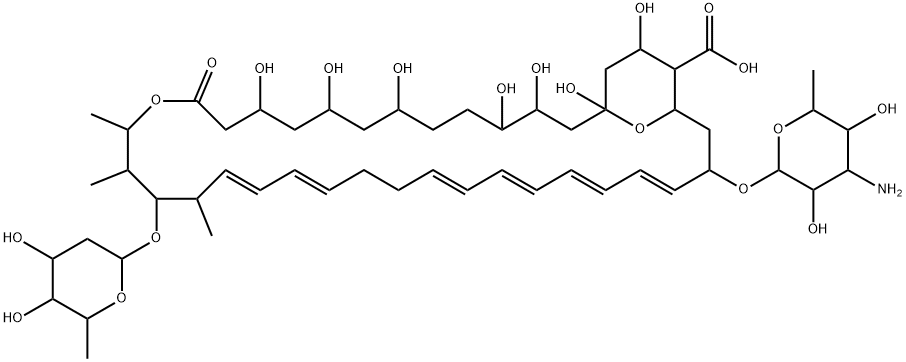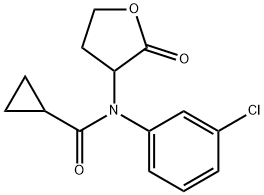Nystatin , ≥4,400USPunits/mg , 1400-61-9
Synonym(s):
Fungicidin;Mycostatin;Nystatin;Nystatin, Streptomyces noursei - CAS 1400-61-9 - Calbiochem
CAS NO.:1400-61-9
Empirical Formula: C47H75NO17
Molecular Weight: 926.09
MDL number: MFCD00036240
EINECS: 215-749-0
| Pack Size | Price | Stock | Quantity |
| 5MU | RMB158.40 | In Stock |
|
| 25MU | RMB318.40 | In Stock |
|
| 100MU | RMB1151.20 | In Stock |
|
| others | Enquire |
PRODUCT Properties
| Melting point: | >155°C (dec.) |
| alpha | D25 -10° (glacial acetic acid); +21° (pyridine); +12° (DMF); -7° (0.1N HCl in methanol) |
| storage temp. | -20°C |
| solubility | H2O: insoluble |
| pka | pKa 5.72(MeOH/2-methoxyethanol/
H2O) (Uncertain);8.64 (Uncertain) |
| form | suspension |
| color | yellow |
| Odor | ofcereals odor |
| biological source | Streptomyces noursei |
| Water Solubility | 0.36g/L(24 ºC) |
| Merck | 13,6770 |
| Specific Activity | ≥4,400USP units/mg |
| BCS Class | 3 |
| InChIKey | VXWFKTGGEJLHPP-OQMKPJEFSA-N |
| CAS DataBase Reference | 1400-61-9 |
| EPA Substance Registry System | Nystatin (1400-61-9) |
Description and Uses
Nystatin was found in the mycelium of Streptomyces noursei in 1950 and produced on an industrial scale by Squibb & Sons Co. in 1954. This antibiotic was used orally and topically as the first clinically applied polyene macrolide with antifungal properties. Nystatin shows activity against Candida and filamentous fungi and is used to treat Candida infections of the mouth, digestive organs, and vagina. The application of nystatin in combination with gentamicin and vancomycin to sterilize the gut in perioperation of bone-marrow transplantation has been developed recently.
Nystatin is polyene antifungal containing a conjugated tetraene and a diene, isolated as a complex of three components A1, A2 and A3 from Streptomyces noursei and first reported in 1950. Nystatin, like most polyene antifungals, binds to sterols in the fungal cell membrane leading to formation of ion channels in the wall, ion imbalance and cell death. Nystatin is an established bioprobe and widely-used antifungal reagent with over 4,000 literature citations.
Safety
| Symbol(GHS) |    GHS02,GHS06,GHS08 |
| Signal word | Warning |
| Hazard statements | H225-H311-H331-H370 |
| Precautionary statements | P210-P260-P280-P303+P361+P353-P405-P501a |
| Hazard Codes | F,C |
| Risk Statements | 11-34 |
| Safety Statements | 22-24/25-45-36/37/39-26-16 |
| WGK Germany | 3 |
| RTECS | RF5950000 |
| F | 10-8-23 |
| HazardClass | 3 |
| HS Code | 38210000 |
| Hazardous Substances Data | 1400-61-9(Hazardous Substances Data) |
| Toxicity | LD50 i.p. in mice: ~200 mg/kg (Seneca) |





